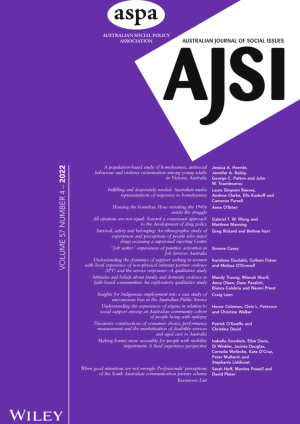Remote housing for Indigenous children in the Fitzroy Valley, Western Australia: A case study
Poor-quality and overcrowded housing in remote communities in Australia is widely seen to negatively impact Indigenous children’s health and development.
Despite widespread reports of, in some instances, quite appalling housing conditions, recent analyses of data from the Longitudinal Study of Indigenous Children (LSIC) found little evidence of adverse housing effects for Indigenous children living in very remote Australia.
Given the apparent inconsistency in evidence coming from representative survey data and other accounts, a small-scale case study was conducted in the Kimberley’s Fitzroy Valley to gain greater insights into housing in very remote communities for families with school-aged children.
The LSIC very remote sample is confirmed to offer a good representation of housing conditions in these communities, based on replication of key housing data items in a small survey of Fitzroy Valley parents.
While not apparent in those parent surveys, problems of severe overcrowding were highlighted in interviews with community leaders.
Other issues raised included delays in maintenance and repairs and a lack of local input into housing management and associated employment, which was seen to disempower communities.




